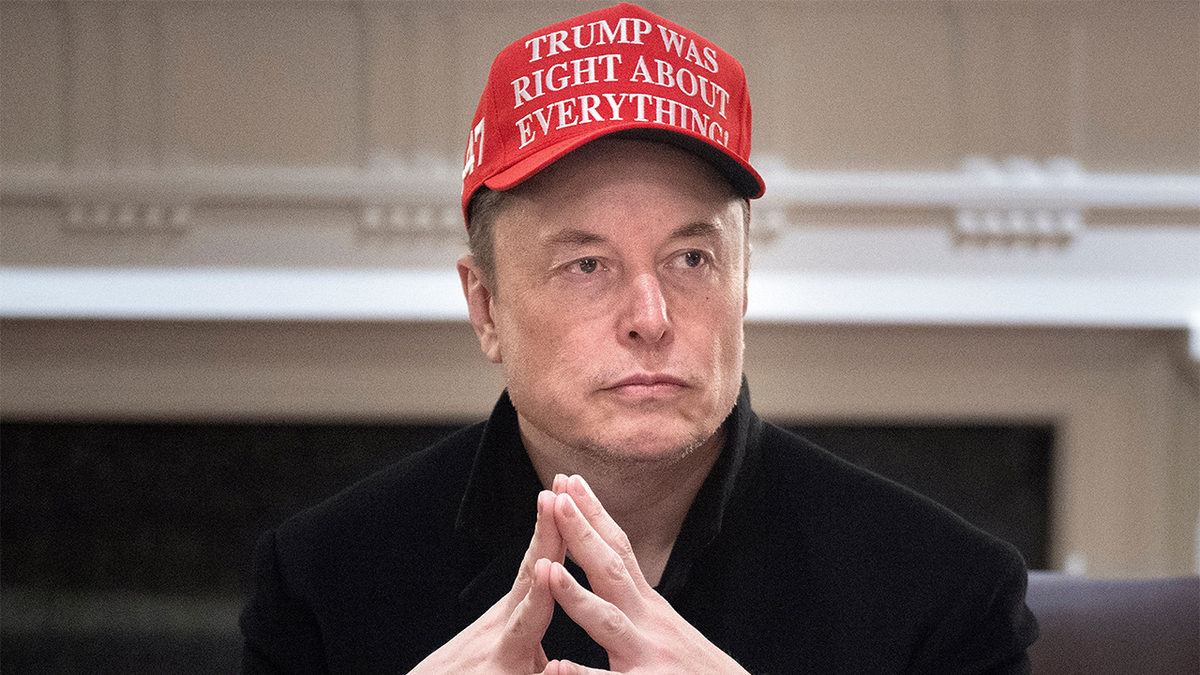newYou can listen to Fox's news articles!
Be honest: When most people hear of “customers,” they think about price increases and trade wars. But the Trump administration's latest tariff deployment is not just a knee protectionist move, but is part of a much broader strategy.
What is actually being played here is a high-stakes effort to build leverage and resources to manage US debt, reset the industrial base, and renegotiate its position in a global order.
How did you reach the release date: See Trump's past comments on tariffs
And it all starts with a problem that most people aren't fully told.
In 2025, the US government will have to refinance its $9.2 trillion in maturity debt. Approximately $6.5 trillion of that is scheduled for by June. That's not a typo. It is a debt barrier, the size of a small continent.
Well, here's mathematics. According to Treasury Secretary Scott Bescent, each base point on interest rate (100% of 100%) saves about $1 billion a year. Since the tariff announcement was made on April 2nd, the Treasury yield for 2010 has fallen from 4.2% to 3.9%. This is a 30 basis point drop. If it is held, it will convert into a savings of $30 billion.
US President Donald Trump keeps charts when making mutual tariff comments at an event titled “Make America Wealthy” at the White House in Washington, DC on April 2, 2025 (Photo: Brendan Smialowski/AFP via Brendan Smialowski/AFP)
(Getty Images)
So keeping yields low is not just a sound policy, it's a financial need.
But we are in a difficult environment. Inflation has not been fully cooled, and the Federal Reserve is wary of the rates being too fast. The questions are: How do you bring about surrender without the help of the federal government?
This is where strategy is interesting.
By introducing drastic tariffs, the administration is creating precisely the kind of economic uncertainty that drives investors to safer assets such as the long-term US Treasury Department. If the market is scared, capital eliminates risk and stock assets (as seen in the collapse of the stock market) and accumulates them into safe assets, primarily a decade-old US Treasury debt. If that demand pushes, yields will be lower.
It's counterintuitive movement, but calculated movement. Some people call it “detox” of an overheated financial system. And it seems to be working.
However, even lower debt doesn't solve everything. The deficit remains massive, and that is where spending cuts begin.

Elon Musk's Doge has pledged to cut the deficit by $1 trillion. (Brendan Smialowski/AFP via Getty Images)
The administration, backed by Government Efficiency (DOGE) and Elon Musk, is reportedly targeting $4 billion in daily spending cuts. If their recommendations are translated into cuts and ratified by Congress, it could reach $1 trillion from the deficit by the second half of 2025.
At this point, there are two pillars. Loan costs are falling and spending is severe. But there is a third and perhaps most importantly, growth remains.
The tariffs act as ignition switches. By making imports more expensive, it creates space for American producers to retreat. The purpose is not to punish trading partners. This means making the domestic industry viable again, even long enough to rebuild its critical capabilities.
Yes, prices will rise. But the administration is fully aware of this. In fact, we are now frontloading the pain as we hope to provide visible employment growth and factory activities before the midterm elections in November 2026.
In the meantime, tariffs themselves generate revenue. That amounts to an estimated $700 billion in the first year. This will allow the administration to cut taxes and increase the fiscal office to maintain spending on Social Security, Medicaid and other programs.
What makes the photos even more interesting is the geopolitical aspect.
These tariffs do not exist in the vacuum. They are unfolding with the intentional reshaping of global partnerships. The US has quietly distanced itself from NATO, re-aligning relations with Europe and opening previously frozen diplomatic channels with Gulf countries and Russia.
why? Because post-Cold War trade orders no longer serve our interests. It enabled deficits, offshoring and strategic dependencies. Currently, customs duties are leveraged. Allies that follow our priorities will receive relief. Others face higher costs.
Naturally, China is a central player. For many years, economists have argued that their artificially weak currency and industry overcapacity have distorted global trade. Customs duties are one way of enforcing calculations, potentially enforcing a revaluation of the original.
Other countries are inevitable. In Europe, Ukraine conditions can be sought. India may be pressured to deep tariff cuts. Canada and Mexico may face demands related to fentanyl and border enforcement.
For more information about Fox News, click here
This is not random. It is trade policy as a means of enforcing the country to the negotiation table.
At home, political logic is equally clear. The sectors most likely to benefit (steel, automobiles, textiles) are concentrated in battlefield states. The administration bets that visible victory in these regions outweighs the short-term pain of sectors that rely on cheap imports.
Click here to get the Fox News app
There is a serious risk here. Blowback can be serious if inflation returns or if the rerun bet fails. But there's no mistake. This is not improvisation. It's a confusion due to the design.
Whether you agree or not, this is one of the most ambitious financial and industrial resets of a generation.
The only question left is that it works?


